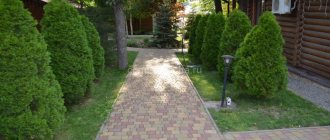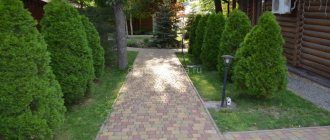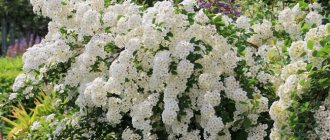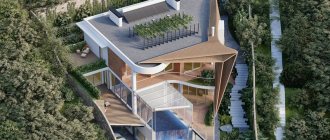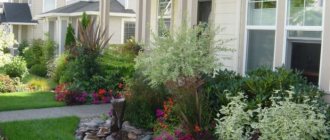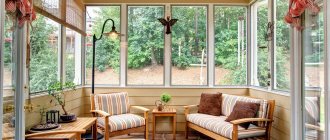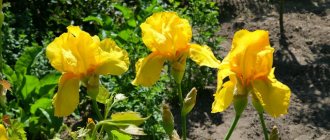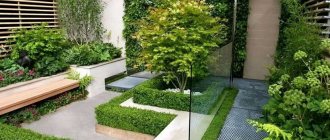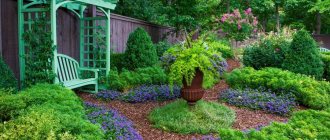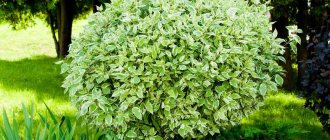Blue spruce is considered one of the most beautiful coniferous plants, which adorn not only landscape designs of private courtyards, but also city squares and parks. This tree always attracts attention not only with its bright and unusual color, but also with the interesting arrangement of branches that are directed straight up. In addition, the tree has a pleasant aroma and looks graceful and majestic on the site.
Description and characteristics
Blue spruce is native to North America. This plant is an evergreen. It has a shallow root system. Spruce is a shade-loving plant. But with a lack of sunlight, it develops poorly, the color of its needles loses its rich color and becomes green, not blue.
The rich pine color of Christmas trees is achieved thanks to an excess layer of plant wax that covers each needle. Wax not only gives the needles a rich color, but also protects them from various adverse environmental factors. The intensity of the color of the needles directly depends on the thickness of the wax coating, and depending on this, the fir trees turn out to have a bluish, bluish or silver color. If you wipe off the wax layer with your hands, the needles will turn a simple green color.
Attention : not all varieties of blue spruce can boast a blue tint. In some varieties, the color of the needles varies from silver-white to gray-green.
Thanks to the waxy coating, Christmas trees are highly resistant to dust. They take root well in polluted cities, and they can even be planted along busy highways.
The plant is a moisture-loving plant, and in the first few years after planting it grows at a very slow pace.
Caution : Blue spruce does best in light, loose soil.
Blaukissen (Blue Kiss)
A dwarf evergreen shrub with a dense oval or spherical crown, formed from short, densely branched shoots. With an annual growth of about 2.5 cm, a 10-year-old specimen does not exceed 60 cm in height and 80 cm in width. The short, prickly needles remain blue-gray throughout the year; young growth is characterized by a creamy-yellow color. Spruce trees of this variety are suitable for growing in partial shade or sun, the main thing is to provide nutrient-rich soil, good drainage and the absence of standing water.
Popular varieties of blue Christmas trees
Kebab
Blue spruce looks great in landscape design. It is suitable for planting in rock gardens, rock gardens, as a hedge, and as a decoration in any flower arrangement.
Landing rules
The planting process should be treated carefully. Plant growth will depend on this. Experienced summer residents recommend adhering to some rules:
- It is necessary to start planting work in the second half of April or August. It is at this time that plants are able to actively develop.
- The place for growing spruce must be well lit. Otherwise, the tree will lose its decorative appearance.
- It is important to prepare a drainage layer. Broken bricks and crushed stone can be used as drainage.
- Dwarf spruce has special requirements for soil composition. In order for the plant to develop normally, it is necessary to properly prepare the soil. To do this, you need to mix the earth, sand, peat, humus.
The use of fir trees in the landscape design of country houses
Blue spruce trees in landscape design not only look aesthetically pleasing, but also have the following advantages:
- maintain high decorative qualities all year round;
- fill the gardens with a pleasant aroma;
- purify the air thanks to the substances released;
- cones are used to make various fakes;
- fallen needles serve as an excellent fertilizer for almost any country crops.
Healing properties of wood
It is known that all types of Christmas trees, without exception, are not only ornamental crops in garden plots, but also bring benefits. Everyone has known about this for a long time. In matters of healing properties, the common spruce turned out to be the leader.
Needles, shoots and even cones are useful, but they are young. They contain a lot of essential oils, tannins, resins, vitamins, microelements, and fatty oils.
Thanks to preparations based on pine needles and decoctions, it is possible to relieve inflammation in the respiratory and genitourinary systems, sinusitis and other diseases of the nasopharynx. For skin problems, gout and arthritis, baths from the buds and branches of the plant will help.
You can brew tea from fresh buds and consume it - it is rich in vitamins. The simplest recipe:
- Grind 40 g of pine needles;
- pour 1 tbsp. boiling water;
- cook for 20 minutes, then let it brew.
Use the resulting decoction throughout the day if you have a vitamin C deficiency.
Attention!
This drink should not be consumed by patients with stomach ulcers.
The needles contain phosphorus, potassium, iron and vitamins. Ascorbic acid and carotene are also present in large quantities, so pine needles serve as raw materials for creating pastes intended as a preventive measure against scurvy and periodontal disease.
Camphor is made from essential oil, which is necessary for the treatment of heart diseases. It also helps get rid of inflammation of the bronchi and mucous membrane of the throat.
The air in which coniferous secretions hover has a positive effect on the human body, improve blood circulation and breathing, and even help cope with mental disorders.
Which plants are best to plant blue spruce in a summer cottage?
These conifers get along well with other plants, creating colorful compositions. Large specimens are recommended to be planted on the side or in the background. You should not give the flower garden a clearly geometric shape. It is better to make it with curves, as this will give it extraordinary beauty.
Attention : conifers are often used by gardeners to plant hedges. In this case, they are planted in the form of a circle or square.
In landscape design, Christmas trees look harmonious with thujas, junipers, and various garden and wildflowers.
In the garden
With the help of Christmas trees, various decorative compositions are created in private gardens. But you should adhere to certain rules:
- when planting conifers, their maximum height is taken into account;
- on the lawn, conifers look especially attractive in solo plantings;
- It is best to plant Christmas trees on the site so that they point in the direction of east or west.
Attention: spruce trees look very attractive surrounded by bright flowers. For this purpose, dwarf varieties with richly colored needles are selected.
In front of the house
It has long been believed that spruces ward off evil spirits and are a symbol of eternal life. That is why they are often planted in front of the house. But here it is important to consider the height of the adult plant. It should not create a shadow on the house, and should not prevent sunlight from entering the room. Therefore, it is best to plant dwarf or creeping varieties in front of the house.
Attention : planting Christmas trees along the road leading to the main entrance of the house looks very impressive and noble. The scheme of planting conifers in front of the house in a checkerboard pattern is also popular.
In the flowerbed
Before planting Christmas trees in a flowerbed, it is worth drawing up a detailed plan - a diagram. It indicates the exact height of an adult plant, its planting location and other nuances. For conifers, it is advisable to choose sunny places, so their needle color will be more saturated. But you should not plant plants in direct sunlight, as burns will appear on the needles.
For the "thoroughbred"
Maybe you can “root branches” from a tree or bush you like on your own? Alas, only some species can be propagated in this way under amateur conditions (mainly thujas and junipers). Therefore, most coniferous plants have to be purchased.
Imported seedlings are widely available for sale. And along with species suitable for growing in open ground, there are “sissies”, which in central Russia can only survive in “winter gardens”. And often it is the latter that are the most attractive... You should not hope that the treasured words “hardy” or “completely hardy” printed on the label (translated from English as “winter-hardy” or “completely winter-hardy”) will guarantee the successful wintering of these plants in countries where whose language is different from English. You can’t always count on the help of sales consultants - they often lack knowledge and personal experience, but they have the desire to present any product beautifully.
Therefore, it makes sense to go shopping with a list of proven conifers, compiled on the basis of the recommendations of our compatriots, given in books and periodicals. We bring to your attention reliable types and varieties of “New Year’s” trees - spruce and fir - they have already been tested in the middle zone (Moscow region).
How to plant spruce trees in a dacha in a beautiful and original way: examples
In order for the planted composition of conifers to look not only aesthetically pleasing, but also original, it is worth planting the Christmas trees in the center of the garden or along the edges. At the same time, attention is paid to the shape of the tree crown, their maximum height, and the color of the needles.
Attention: trees that are too tall will cover other ornamental shrubs and flowers, thereby disturbing the overall composition of the garden.
Due to the fact that Christmas trees purify the air well, they are often planted near recreation areas. That is, in the patio area, not far from the garden gazebos. They harmoniously combine with various trees and shrubs, creating colorful compositions on the site. For this, low varieties are used so that they are slightly taller than the building itself. This will add harmony to the overall composition, and in the hot summer heat will provide coolness and comfort when relaxing in the gazebo.
To make your garden plot stylish and original, experienced gardeners recommend using dwarf varieties of Christmas trees with an unusual color of needles. To do this, you should purchase a seedling from a proven and reliable nursery. It is important to check it for defects, the quality of the root system, and the absence of pests. The most ideal option is considered to be strong seedlings, 2-3 years old. They take root best and adapt to the conditions around them.
To summarize, it is worth noting that blue spruce trees in landscape design will never go out of fashion. They are always in demand due to the beautiful color of the needles, curvaceous shapes, and other decorative qualities. These plants are easy to care for and fit harmoniously into various flower arrangements in the areas.
Advantages
- They exactly copy their original, only in miniature, which allows you to get a closer look at their life and observe all stages of development.
- Due to their compactness, they take up little space.
- With their help, you can create static compositions that are decorative throughout the year.
- Very harmonious in rockeries.
- They are valued for their ability to be used in containers as a New Year's tree or New Year's compositions.
- They overwinter well, covered with snow “almost up to their heads.”
Miniature copy
Edith (Edith)
A low variety with an almost ideal conical crown shape, characterized by increased density due to thin needles growing densely on the branches. In the first years, the blue spruce develops a leader shoot, which will subsequently become the basis for the formation of a correct, even crown. By the age of 10 it grows to 1.5-2 m. Subsequent annual growth is 20-25 cm.
Small (up to 3-6 cm) cones appear on 6-8 year old specimens. In spring they are pink in color, but gradually become light brown. Edith is frost and drought resistant and can grow in polluted city air. Even light partial shade is suitable for its cultivation, but in the sun the crown will be much more luxuriant, and the needles will acquire a more saturated blue hue.
Sanders Blue
The variety is popular for decorative garden decoration due to its dense crown of regular conical shape. But with age it may become slightly deformed, which can be easily corrected by trimming. Growth per year does not exceed 5-7 cm. At 10 years of age, the height varies between 0.7-1 m. 30-year-old spruce trees can grow up to 3 m with a crown diameter of up to 1.5 m.
Young needles are light blue in color; by mid-summer they unevenly turn green, which gives the trees an unusual spotted color. Mature needles become hard and sharp, retaining a faint bluish tint in winter. Sanders Blue does not tolerate drought or dense soil and is suitable for growing in sun or light partial shade. The needles fade in the sun much less than other varieties. In the complete absence of light, the needles will fade and the tree will weaken.
Waldbrunn
A slow-growing prickly spruce no higher than 0.8 m. The round, spreading crown often has a depression in the middle, which evokes associations with a bird's nest. It disappears as it grows, and the crown takes the shape of a dense, wide cone. To make it more symmetrical, it is desirable to tie the central shoot to a support.
Thickened short branches grow horizontally and, due to their density, make Waldbrun one of the leaders among dwarf varieties in terms of density and compactness of the crown. Bright blue young needles gradually become silver-gray in color, the length of thick soft needles is up to 1.5 cm. The coniferous plant loves sunny places or partial shade. In the absence of sufficient light, it may lose color brightness.
Ofazende.ru
Hermann Naue
These blue spruce trees are characterized by a dense, prickly, cushion-shaped crown that turns into a wide cone with age. Over 10 years, it usually grows up to 0.7 m in height, up to 0.8-0.9 m in diameter. Representatives of the variety are characterized by the absence of a central trunk, short rigid branches of various orientations, covered with gray-blue needles.
During the fruiting period, which begins at a young age, numerous bright pink cones add to the showiness of the tree. As they dry, they take on a pale brown tint. Herman Nau tolerates summer drought and winter frosts well.
